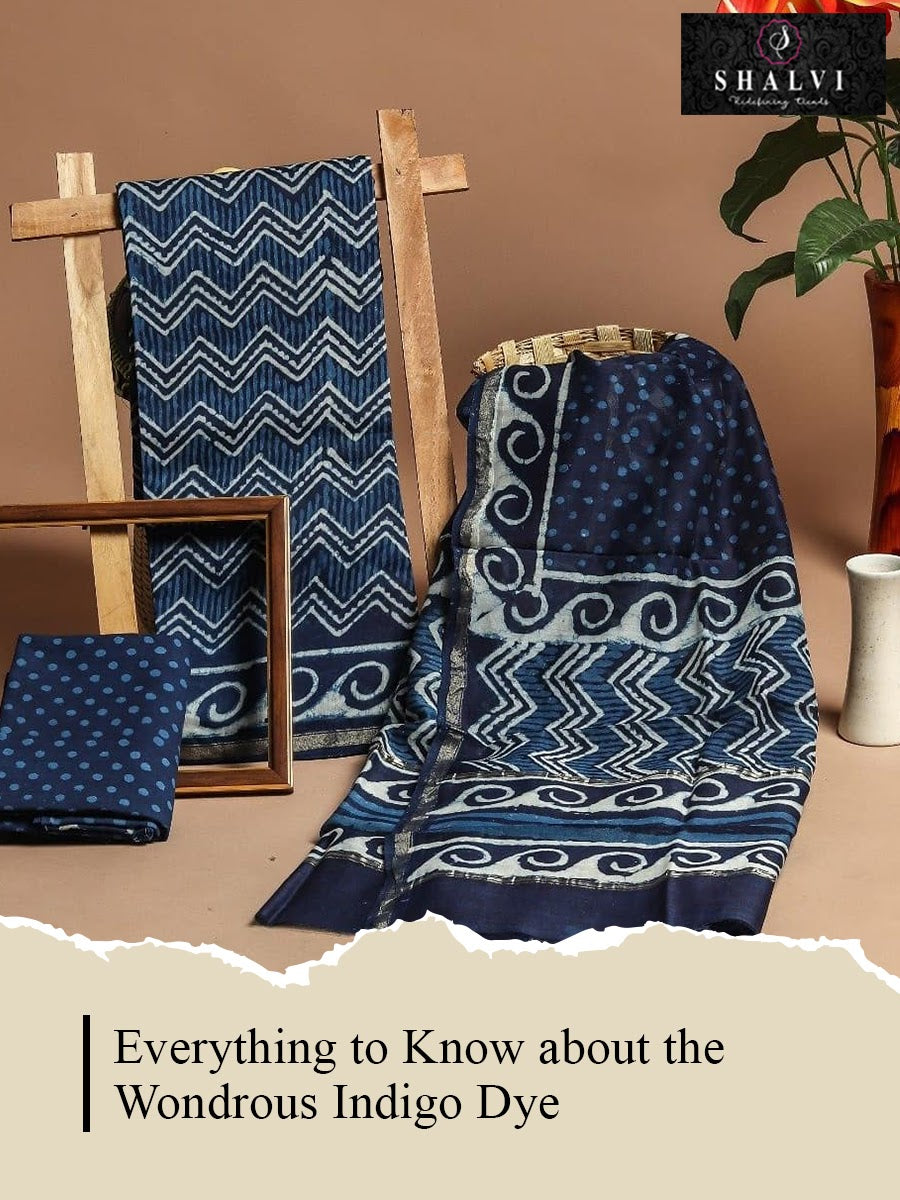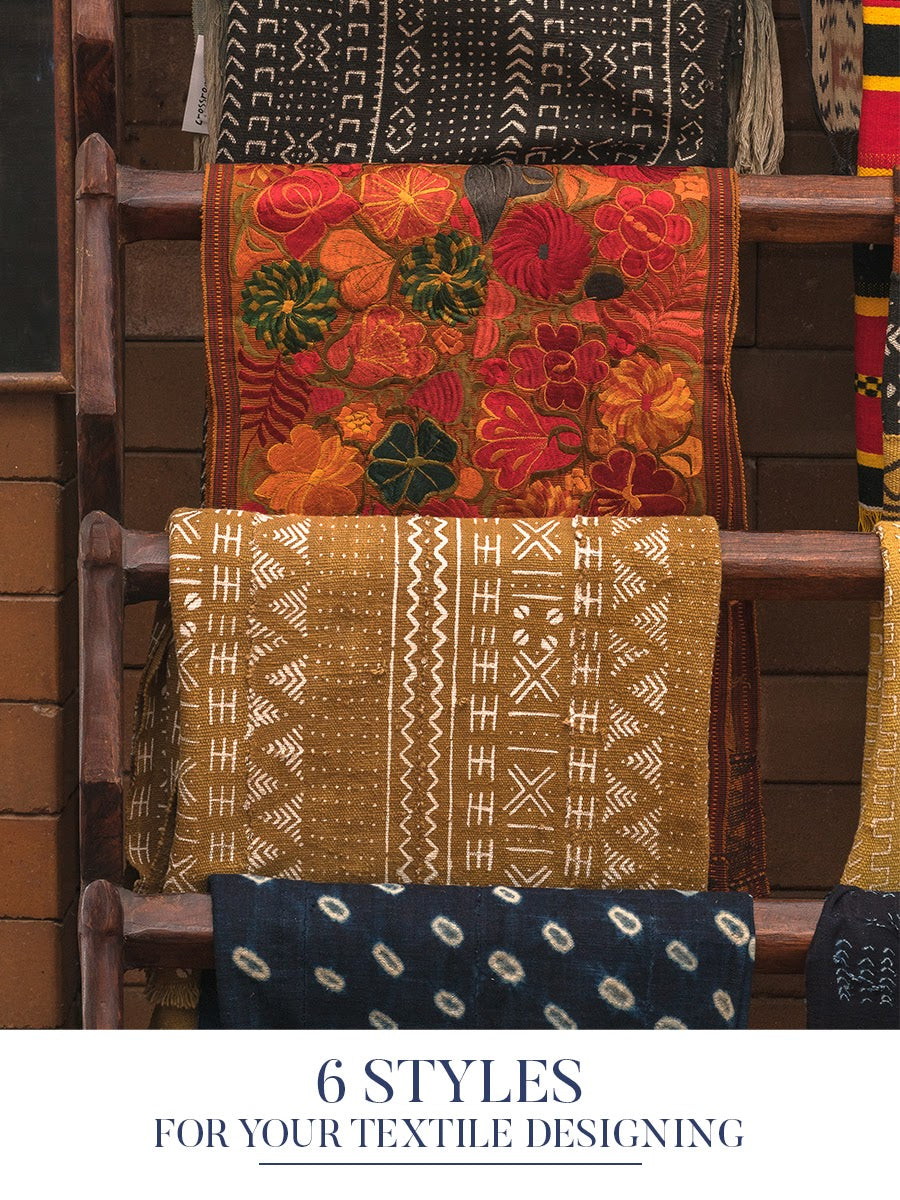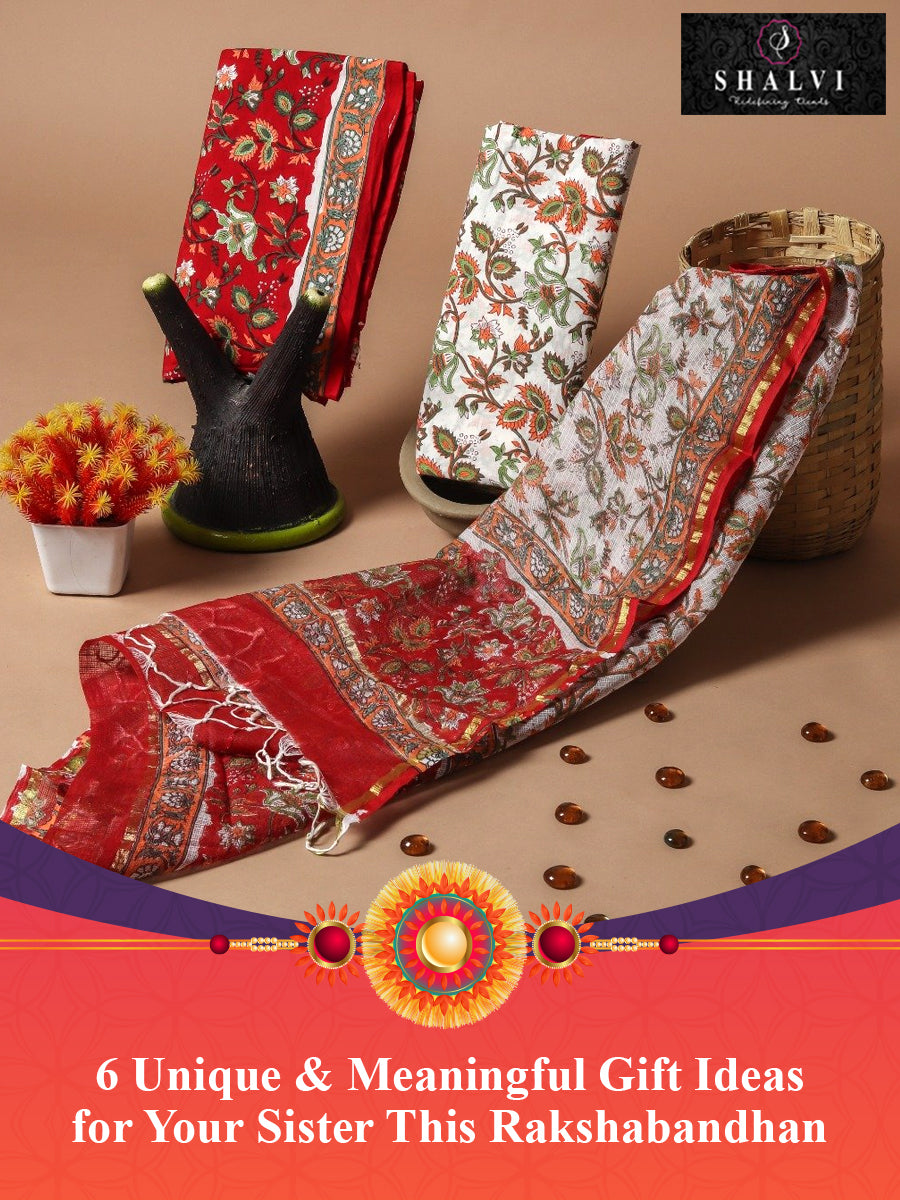
Indigo Fabric: History, Process, Present Fashion & Everything in Between
Indigo, one of the most popular and known fabric dyes, the word instantly brings a beautiful deep blue colour to the mind. Today, Indigo fabrics are being lavishly used not only by Indian fashion but also the global fashion industry and yet, the charm of it is ever increasing.
However, before diving deep into the beauty of Indigo and how it has become an inseparable part of the Indian ethnic fashion, it’s important to know its roots, its glorious and not-so-glorious history.
All about indigo fabric-
Did you know Indigo is considered to be the world’s oldest textile dye?
Yes, you read that right! Many archaeological studies and reports find that the use of Indigo dye dates back to over 4000 years ago, and is believed to be originated in India. Interestingly, archaeologists recovered pieces of dyed blue cloth dated to 1750 BC from Mohenjo-Daro, an affluent town of the Harappan Civilization.
However, Indigo’s extensive use can also be found in Egypt, China, and many other Asian countries. It has been found that the tablets from 7th century BC Mesopotamia had documents suggesting coloring of the wool using Indigo dye.
Fast forward to the mid 15th century when, Vasco da Gama, the great Portuguese explorer discovered a sea route to India, it opened the world to the India’s rich goods. It also led to export of this wonder dye to Europe.
The not-so-glorious part of Indigo Dye cultivation
Indigo dye became a status symbol due to the labor-intensive process of obtaining the dye and in fact, after the British rule in India and mass export of the dye to Europe earned it the status of ‘Blue Gold.’ At the grassroot level, the increasing charm of dye brought about the exploitation and slavery of labourers.
In India, the Britishers started mass cultivation of the plants, the genus Indigofera. In fact, its high demand but unfavorable climatic conditions to grow the plant types in Europe led European powers to build indigo plantations in their tropical colonies in America and parts of Africa.
The largest plantations were found in Jamaica, South Carolina and Virgin Islands where African and African-American slaves were forced into bonded labor in poor conditions and long hours.
The invention of synthetic Indigo dye in the 19th century led to bulk production at cheap prices resulting in a sharp decline in the demand for natural dye.
However, in various parts of the world, especially in India, Japan, and Indonesia, many communities have preserved this beautiful art of Indigo dye extraction, helping it revive its status as a remarkable piece of the artform.
The Tedious Process of Indigo Dye Extraction
As mentioned earlier, Indigo dye is produced from plants type of Indigofera, but the process of extracting the colour from the plant is cumbersome and a long one because the leaves or the flowers are not blue in colour.
To share the process in brief.
- The leaves of the plant are compiled in bundles and are soaked in clear fresh water and lye in the vats made of cemented bricks.
- The leaves are left to ferment for 10-15 hours.
- The yellow-colored liquor produced from fermentation is then poured into manual beaters where it is treated with wooden oars or a beating machine until the color of the matter changes to green, then blue to finally the stunning indigo.
- This color settles down the beater in form of soft, watery clay that is further boiled, filtered to remove any residual substances, and then sundried into dry cakes to be later cut into cubes.
Embracing this beautiful dye: Indigo Fabrics Ethnic Wear by Shalvi Fashions
Jaipur and a few neighbouring towns have still been practicing the art of extracting natural Indigo dye, preserving its age-old history and its handcrafted value.
Being situated in the city, we truly honour the illustrious dye along with other indigenous textile art forms of the state and incorporate it in our collections.
Here’s a glance at the Indigo colored ethnic wear collection that you should really explore if you are looking to add this beautiful colour to your wardrobe.
Indigo Sarees

Abstract prints and Indigo, perfect combo! Style your power lunches with clients/colleagues or your evening soirees in these beautiful Chanderi sarees in Indigo color. Hand dyed and handcrafted, these sarees will be a classy addition to your ethnic collection.

Indigo Suit Sets
Our Indigo-coloured unstitched suit sets are hotsellers and why not! Easy, breezy, and fun, you can get them styled in any way you want!

This Indigo print Chanderi Silk Suit has Aztec and polka fusion print with complementing Chanderi Dupatta and cotton bottoms.

If you love floral prints, this is a great choice as it has beautiful hand block floral jaal print.
And, if you are all for statement paisley indigo print, this cotton suit with Kota Doria dupatta featuring bold flower motifs will be your favourite for everyday hustle and bustle at home as well as work.
How to wash Indigo dyed fabric and its aftercare?
Maintaining the natural luster and beauty of the Indigo fabrics isn’t too difficult. Just keep in mind a few things and it’s all easy-peasy.
- First-time dryclean is highly recommended for indigo dyed wear
- After first dryclean also, handwash in cold water using gentle washing liquid is advised to maintain the colour for a longer time. There may be slight bleeding of colour in the first couple of washes but after that, it will stop.
- While sun drying is recommended, please avoid placing indigo wear in direct sunlight as it may fade the colour sooner. Instead, hang it in a shade.
Celebrate the essence of indigo
The journey of Indigo dye is nothing short of magical and wondrous and the massive transformation it has gone through is mind-blowing.
Yet, to understand that there are a people across the globe who are striving hard to preserve the legacy of the world’s oldest known natural dye should be enough reason to celebrate this textile art form.
If you are looking for hand dyed and hand block printed Indigo ethnic fashion pieces, you should explore our collection on our website, here.





